Search
Filter results
- All Categories 386
- Content 116
- Events 74
- Groups 6
- Knowledge Base 7
- Members 23
- Resources 157
- Wiki 3
Results (page 1 of 4)
-
Gotomeeting call regarding data analysis- Noon HWI time, 9 am ASU time and 6 pm DESY time
Events 14 Apr 2015
Apr 14 2015
-
Wiki 22 May 2014
What is Wiki? A wiki is a collaborative software program that allows users to add or edit content on a Web page without having to know HMTL or programming languages. Most commonly, the term wiki refers to a Web page that can be revised by anyone.Creating and editing wikis are very simple; all that is required is Internet access and a browser.…
-
Mix and Inject: Reaction Initiation by Diffusion for Time-Resolved Macromolecular Crystallography
Publications 1 Jan 2010 Contributor(s): Marius Schmidt
Time-resolved macromolecular crystallography unifies structure determination with chemical kinetics, since the structures of transient states and chemical and kinetic mechanisms can be determined simultaneously from the same data.… This has particular disadvantages that are circumvented when active substrate is directly provided…
https://bioxfel.org/resources/Mix-and-Inject:-Reaction-Initiation
-
Wiki 22 May 2014
Introduction All editable pages have an associated page history, which consists of the old versions of the wikitext, as well as a record of the date and time of every edit, the name of the user who wrote it, and their edit summary.… history" tab at the top of the page. This may also be referred to as the revision history or edit…
-
BioXFEL Publications 4 Apr 2019 Contributor(s): Lan Zhu, Derek Mendez, Chufeng Li, GANESH SUBRAMANIAN, Zachary Dobson, Shangji Zhang, Uwe Weierstall, John Spence, Petra Fromme, Nadia Zatsepin, Vadim Cherezov, Wei Liu
http://dx.doi.org/10.1107/s205225251900263x Since the first successful serial crystallography (SX) experiment at a synchrotron radiation source, the popularity of this approach has continued to grow showing that third-generation synchrotrons can be viable alternatives to scarce X-ray free-electron laser sources. Synchrotron radiation flux may be…
-
BioXFEL collaborator Henry Chapman receives 2017 Roentgen Medal
News 11 Apr 2017
DESY scientist Henry Chapman has been awarded the Roentgen Medal by the city of Remscheid.… Henry Chapman, a Leading Scientist at DESY and professor at the University of Hamburg, has been awarded the Medal in recognition of his pioneering work on the application of X-ray lasers for determining the structure of biological…
-
LCLS Beamtime - Protein Crystal Screening
Events 9 Apr 2015
Apr 09 2015
1 um PCS CXI station Schedule of PCS beam times will be posted when released.
-
Mix and Inject: Reaction Initiation by Diffusion for Time-Resolved Macromolecular Crystallography
BioXFEL Publications 12 May 2013 Contributor(s): Marius Schmidt
Time-resolved macromolecular crystallography unifies structure determination with chemical kinetics, since the structures of transient states and chemical and kinetic mechanisms can be determined simultaneously from the same data.… This has particular disadvantages that are circumvented when active substrate is directly provided…
-
Tools 25 Mar 2010
There are two common reasons why you may not be able to view an application. The tool is internally misconfigured. If you can look at your personalized dashboard page and see that the tool you just started does not appear in the list of running sessions, it exited before it could be viewed. You should report this as a problem. The Java…
-
Members
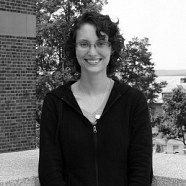
Andrea Katz received her Bachelor's degree in Physics and Astronomy from Trinity University in 2011.… Lois Pollack’s research group. Here, Andrea developed new methods and instrumentation to study a diverse range of biological molecules.… As a postdoc in the Pollack group, Andrea is developing spectroscopic…
-
Groups
Marius Schmidt is using physical methods to investigate biological molecules. He is concentrating mainly on static and time-resolved macromolecular crystallography to investigate the structure, dynamics and kinetics of proteins.… Schmidt is also developing new, sophisticated software for the analysis of the time-resolved…
-
Events 31 Aug 2021
Aug 31 2021
NSF STC Directors Meeting 2021 Exploratory Research: The Foundation for Groundbreaking Discoveries August 31 – September 1, 2021 Hosted by: Biology with X-ray Free Electron Lasers (BioXFEL) via Zoom Note all times are listed in Eastern Daylight Time … BioXFEL is pleased to host the 2021 STC Directors Meeting…
-
Events 12 Mar 2017
Mar 12 2017
-
Events 6 Nov 2016
Nov 06 2016
-
Events 13 Mar 2016
Mar 13 2016
-
Events 1 Nov 2015
Nov 01 2015
-
Events 8 Mar 2015
Mar 08 2015
-
Events 2 Dec 2015
Dec 02 2015
-
NSF BioXFEL STC Postdoctoral Research Award granted to Andrea Katz
News 21 Mar 2019
The BioXFEL Center is proud to announce the recipient of the 2019 Postdoctoral Research Award, Andrea Katz. Andrea Katz received her Bachelor's degree in Physics and Astronomy from Trinity University in 2011.… She came to Cornell's Applied Physics department for graduate studies and joined Dr.… Here, Andrea…
-
De novo protein crystal structure determination from X-ray free-electron laser data
Publications 9 Jan 2014 Contributor(s): Marc Messerschmidt
The determination of protein crystal structures is hampered by the need for macroscopic crystals.… So far, all protein structure determinations carried out using FELs have been based on previous knowledge of related, known structures.… Using the emerging technique of serial femtosecond crystallography, we…
https://bioxfel.org/resources/De-novo-protein-crystal-structure
-
Events 21 Nov 2016
Nov 21 2016
About the Workshop X-ray free electron laser (XFEL) is a new type of X-ray source with two distinct features that have never been possible in the past: extreme brilliance and femtosecond (fs) time resolution.… The XFEL pulses on femtosecond time scale, like a fast shutter that can catch femtosecond or slower…
-
Pump-Probe Time-Resolved Serial Femtosecond Crystallography at X-Ray Free Electron Lasers
BioXFEL Publications 22 Jul 2020 Contributor(s): suraj pandey, Ishwor Poudyal, Tek Narsingh Malla
http://dx.doi.org/10.3390/cryst10070628 With time-resolved crystallography (TRX), it is possible to follow the reaction dynamics in biological macromolecules by investigating the structure of transient states along the reaction coordinate.… Here, we review the recent developments, opportunities, and challenges of pump-probe TRX at…
-
Why do I get logged off automatically?
Registration 25 Mar 2010
If you do not check the Remember login box when you log in, the site will only keep you logged in for a short time.… To stay logged in, check the box during login. This is not recommended if you access the site from a shared computer--e.
-
Members

This past September, I was invited to the XFEL beam time from September 17th to 19th with my mentor Dr.… I worked with Dr. Grant this summer through the BioXFEL summer internship program, and expanded on a software useful for users collecting solution scattering data.… I was able to experience the quick decisions…
-
Members
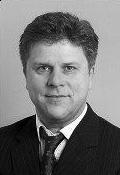
Marius Schmidt is using physical methods to investigate biological molecules. He is concentrating mainly on static and time-resolved macromolecular crystallography to investigate the structure, dynamics and kinetics of proteins.… Schmidt is also developing new, sophisticated software for the analysis of the time-resolved…
-
2014 BioXFEL STC Meeting for Graduate Students and Post Docs
Events 8 Oct 2014
Oct 08 2014
We are pleased to announce the first annual meeting of BioXFEL graduate students and postdocs at the 2014 SSRL/LCLS Users’ Meeting and Workshops, featuring a presentation by Dr Marc Messerschmidt on the latest advances in XFEL facilities in Europe and the US.… The Center will cover cost of travel, lodging, meals, and any…
-
Tips 25 Mar 2010
To change your dashboard page, simply click the Personalize button located in the upper-right corner of that page. The page will enter a customization mode where you may move modules around by simple drag-and-drop, remove modules, or add modules.… Your changes will even be remembered the next time you log in--even if you use a…
-
In vivo protein crystallization opens new routes in structural biology
Publications 1 Mar 2012 Contributor(s): Uwe Weierstall, Petra Fromme, Mark S. Hunter, Marc Messerschmidt, John Spence, Henry Chapman
Protein crystallization in cells has been observed several times in nature.
https://bioxfel.org/resources/In-vivo-protein-crystallization-opens
-
Approaches to time-resolved diffraction using an XFEL
BioXFEL Publications 25 Mar 2014 Contributor(s): John Spence
http://dx.doi.org/10.1039/c4fd00025k John C. H. Spence Spence, J.C.H., 2014. Approaches to time-resolved diffraction using an XFEL.… , 171, pp.429–438. Available at: http://dx.doi.org/10.1039/c4fd00025k. NSF-STC Biology with X-ray Lasers (NSF-1231306) We describe several schemes for time-resolved imaging of molecular motion…
-
Dynamics retrieval from stochastically weighted incomplete data by low-pass spectral analysis
BioXFEL Publications 16 Aug 2022 Contributor(s): Ahmad Hosseinizadeh, Gebhard F.X. Schertler, Abbas Ourmazd
http://dx.doi.org/10.1063/4.0000156 Time-resolved serial femtosecond crystallography (TR-SFX) provides access to protein dynamics on sub-picosecond timescales, and with atomic resolution.… To tackle these issues, one established procedure is that of splitting the data into time bins, and averaging the multiple measurements of…
-
Education 2 Jun 2020
I'm sure all of you are tired of hearing how these are "unprecedented"… challenging" times.… Instead of reminding you of our hardships, we would like to offer some resources that may help. We have compiled below several resources that can help you get through this and come out on the other side as a better…
-
Events 1 Oct 2021
Oct 01 2021
LCLS Beamtime Proposal schedule and submission process can be found below.… LCLS Beamtime Proposal Schedule … Mode of AccessRun CycleProposal Call StatusDeadlineCycle BeginsCycle Ends … Scientific Campaign LCLS 20 Accepting Proposals via the User Portal 19 July 2021 Jan 2022 Jun…
-
LCLS Beamtime Proposal Deadline
Events 19 Jul 2021
Jul 19 2021
LCLS Beamtime Proposal schedule and submission process can be found below.… LCLS Beamtime Proposal Schedule … Mode of AccessRun CycleProposal Call StatusDeadlineCycle BeginsCycle Ends … Scientific Campaign LCLS 20 Accepting Proposals via the User Portal 19 July 2021 Jan 2022 Jun…
-
Filling data analysis gaps in time-resolved crystallography by machine learning
BioXFEL Publications 21 Jan 2025 Contributor(s): Russell Fung, Peter Schwander, Ahmad Hosseinizadeh
https://doi.org/10.1063/4.0000280 There is a growing understanding of the structural dynamics of biological molecules fueled by x-ray crystallography experiments.… Nevertheless, this technique comes with some limitations. One major challenge is the quality of data from TR-SFX measurements, which often faces issues like data…
-
Tips 25 Mar 2010
Have some interesting results from a simulation that you'd like someone else to see? Share the session! Enter one or more login names in the form beneath the tool session and click on the Share button. Anyone added for sharing will see your tool session listed on their own My Sessions area on their dashboard page.… Many people…
-
Early-stage dynamics of chloride ion–pumping rhodopsin revealed by a femtosecond X-ray laser
BioXFEL Publications 22 Mar 2021 Contributor(s): Chufeng Li, suraj pandey, Mark S. Hunter, Uwe Weierstall, Nadia Zatsepin, John Spence, Marius Schmidt, haiguang liu
http://dx.doi.org/10.1073/pnas.2020486118 Chloride ion–pumping rhodopsin (ClR) in some marine bacteria utilizes light energy to actively transport Cl− into cells.… Here, we show the dynamics of ion transport observed with time-resolved serial femtosecond (fs) crystallography using the Linac Coherent Light…
-
Members
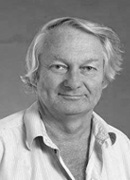
John Spence, FRS, is Richard Snell Professor of Physics at Arizona State University, where he teaches graduate condensed matter physics, and is Director of Science for the National Science Foundation's BioXFEL Science and Technology Center.… Dr. Spence completed a Ph.D., in Physics at Melbourne University in 1972, followed…
-
Publications 1 Jan 2014 Contributor(s): Marius Schmidt, Brenda Hogue
-
Spectral encoding method for measuring the relative arrival time between x-ray/optical pulses
BioXFEL Publications 29 Aug 2014
journal-article http://dx.doi.org/10.1063/1.4893657 Bionta, M.R. et al., 2014. Spectral encoding method for measuring the relative arrival time between x-ray/optical pulses.
-
Integrative, dynamic structural biology at atomic resolution—it's about time
BioXFEL Publications 31 Mar 2015 Contributor(s): James Fraser
http://dx.doi.org/10.1038/nmeth.3324 Henry van den Bedem and James S Fraser Van den Bedem, H.… S., 2015. Integrative, dynamic structural biology at atomic resolution—it’s about time.
-
News 12 Sep 2017
Scientists who make movies of molecules in motion have a new high-speed camera to shoot with. The €1.2-billion (US$1.4-billion) European X-ray Free Electron Laser (XFEL) will start running its first experiments in September near Hamburg, Germany. The European XFEL fires powerful X-rays in bursts of a few hundred femtoseconds: so short that, like…
-
BioXFEL Publications 11 Sep 2023 Contributor(s): Nadia Zatsepin, Masahide Hikita, Chelsie E Conrad, Garrett Charles Nelson, Jesse David Coe, Shibom Basu, Mark S. Hunter, Petra Fromme
http://dx.doi.org/10.1021/jacs.3c07803 journal-article NSF-STC Biology with X-ray Lasers (NSF-1231306) Ishigami, I., Carbajo, S., Zatsepin, N., Hikita, M., Conrad, C. E., Nelson, G., Coe, J., Basu, S., Grant, T., Seaberg, M. H., Sierra, R. G., Hunter, M. S., Fromme, P., Fromme, R., Rousseau, D. L., & Yeh, S.-R. (2023). Detection of a Geminate…
-
BioXFEL Publications 8 Sep 2021 Contributor(s): suraj pandey, George Douglas Calvey, Andrea Katz, Tek Narsingh Malla, Faisal Hammad Mekky Koua, Ishwor Poudyal, Jay-How Yang, Kara Zielinski, Matthias Frank, Rebecca Jeanne Jernigan, Mitchell Miller, Garrett Charles Nelson, Abbas Ourmazd, John Spence, Peter Schwander, Henry Chapman, Petra Fromme, George Phillips, Lois Pollack, Marius Schmidt
http://dx.doi.org/10.1107/s2052252521008125 Here, we illustrate what happens inside the catalytic cleft of an enzyme when substrate or ligand binds on single-millisecond timescales.… The high repetition rate of the EuXFEL combined with our mix-and-inject technology enables the initial phase of ceftriaxone binding to the…
-
Co-flow injection for serial crystallography at X-ray free-electron lasers
BioXFEL Publications 16 Dec 2021 Contributor(s): Diandra Doppler, Sahir Ilyas Gandhi, Ana Egatz-Gomez, Mukul Sonker, Joe Chen, Faisal Hammad Mekky Koua, Victoria Mazalova, Megan Shelby, Max Oliver Wiedorn, Mark S. Hunter, Ahmad Hosseinizadeh, Reza Nazari, Konstantinos Karpos, Zachary Dobson, Erin Discianno, Shangji Zhang, James D Zook, Gihan Kaushylal Ketawala, Natasha Stander, Peter Schwander, Marius Schmidt, Marc Messerschmidt, Abbas Ourmazd, Nadia Zatsepin, Uwe Weierstall, Henry Chapman, Matthias Frank, John Spence, Sabine Botha, Petra Fromme, Richard Kirian, Alexandra Ros
http://dx.doi.org/10.1107/s1600576721011079 Serial femtosecond crystallography (SFX) is a powerful technique that exploits X-ray free-electron lasers to determine the structure of macromolecules at room temperature.… Samples requiring liquid injection of crystal slurries consume large quantities of crystals (at times up to a gram…
-
Heterogeneity in M. tuberculosis β-lactamase inhibition by Sulbactam
News 8 Sep 2023
In a paper just published in Nature Communications, a team of BioXFEL researchers and collaborators used mix-and-inject serial crystallography (MISC) to analyze the reaction of the β-lactamase BlaC from tuberculosis bacteria with the suicide inhibitor sulbactam (SUB).… In this study, Tek Malla, a graduate student from Marius…
-
Members

Chelsie E. Conrad is a Ph.D. Candidate at Arizona State University in the department of Chemistry and Biochemistry.… S. from the University of Utah in Salt Lake City, Utah; where she studied a zinc finger protein involved in epigenetics using nuclear magnetic resonance spectroscopy. Her Ph.D. dissertation is focused on method…
-
Dismantling antibiotic resistance one variant at a time: in vitro and computational analysis of VatD
BioXFEL Publications 11 Feb 2022 Contributor(s): James Fraser
http://dx.doi.org/10.1016/j.bpj.2021.11.2487 journal-article Kelley, A. M., Macdonald, C. B., & Fraser, J. (2022). Dismantling antibiotic resistance one variant at a time: in vitro and computational analysis of VatD.
-
Structural Biology with X-rays: Data Collection and Analysis at the SSRL Synchrotron
Education 4 Oct 2019
BioXFEL will be sponsoring a X-ray Data Collection and Data Analysis workshop in collaboration with scientists at the Stanford Linear Accelerator Center (SLAC) National Lab on Saturday and Sunday January 25th - 26th (and optionally, on Monday the 27th for additional hands-on instruction). We will be offering a hands-on training workshop for protein…
-
BioXFEL Publications 24 Nov 2014
http://dx.doi.org/10.1038/nphoton.2014.278 journal-article Helml, W. et al., 2014. Measuring the temporal structure of few-femtosecond free-electron laser X-ray pulses directly in the time domain.
-
Viscous Jet Supply for Non-Center Members
Knowledge Transfer 11 Apr 2017
LCP injectors offer advantages over liquid injectors in areas including sample consumption and native crystallization environment for membrane proteins. These viscous jets are now regularly used by several groups within and outside of BioXFEL for serial femtosecond crystallography at XFELs.… Additionally, due to the viscous nature…
-
Job Opening: Research Specialist
News 24 Mar 2017
Arizona State University is currently seeking a research specialist. This position in experimental biophysics would assist scientists in collecting experimental data at the Linac Coherent Light Source (LCLS) X-ray laser near Stanford University, as part of the BioXFEL project https://www.bioxfel.org/. The job is based at ASU in Tempe, but…
-
Synchronous RNA conformational changes trigger ordered phase transitions in crystals
BioXFEL Publications 19 Mar 2021 Contributor(s): Chelsie E Conrad, Max Oliver Wiedorn, Chufeng Li, Mark S. Hunter, Nadia Zatsepin, suraj pandey, Marius Schmidt, John Spence, Henry Chapman
http://dx.doi.org/10.1038/s41467-021-21838-5 AbstractTime-resolved studies of biomacromolecular crystals have been limited to systems involving only minute conformational changes within the same lattice.… Here we report the synchronous behavior of the adenine riboswitch aptamer RNA in crystal during ligand-triggered isothermal…
-
X-ray lasers for structural and dynamic biology
Publications 1 Oct 2012 Contributor(s): Uwe Weierstall, John Spence, Henry Chapman
Research opportunities and techniques are reviewed for the application of hard x-ray pulsed free-electron lasers (XFEL) to structural biology. These include the imaging of protein nanocrystals, single particles such as viruses, pump--probe experiments for time-resolved nanocrystallography, and snapshot wide-angle x-ray scattering (WAXS) from…
https://bioxfel.org/resources/X-ray-lasers-for-structural-and
-
BioXFEL Publications 4 Dec 2014 Contributor(s): Shibom Basu, Nadia Zatsepin, Kanupriya Pande, Matthias Frank, Mark S. Hunter, Christopher Kupitz, Chelsie E Conrad, Jesse David Coe, Shatabdi Roy-Chowdhury, Uwe Weierstall, Peter Schwander, Abbas Ourmazd, John Spence, Petra Fromme, Henry Chapman, Marius Schmidt
http://dx.doi.org/10.1126/science.1259357Jason Tenboer and Shibom Basu and Nadia Zatsepin and Kanupriya Pande and Despina Milathianaki and Matthias Frank and Mark Hunter and Sébastien Boutet and Garth J.… Koglin and Dominik Oberthuer and Michael Heymann and Christopher Kupitz and Chelsie Conrad and Jesse Coe and Shatabdi…
-
Groups
The Kornberg lab's general interest in the BioXFEL Center is to explore the use of the nanocrystals and single particle analysis to study transcription and transcription regulator complexes. The Kornberg lab has two immediate projects they will embark on via the BioXFEL Center. The first project is a serial femtosecond crystallography project on…
-
Time-resolved serial femtosecond crystallography at the European XFEL
BioXFEL Publications 18 Nov 2019 Contributor(s): suraj pandey, Ishwor Poudyal, Christopher Kupitz, Mark S. Hunter, Austin Echelmeier, Diandra Doppler, Matthias Frank, Faisal Hammad Mekky Koua, Victoria Mazalova, Abbas Ourmazd, Peter Schwander, Henry Chapman, Alexandra Ros, Petra Fromme, Marius Schmidt
http://dx.doi.org/10.1038/s41592-019-0628-z journal-article NSF-STC Biology with X-ray Lasers (NSF-1231306) Pandey, S.… , 2019. Time-resolved serial femtosecond crystallography at the European XFEL.… Available at: http://dx.doi.org/10.1038/s41592-019-0628-z. Suraj Pandey and Richard Bean and Tokushi Sato and…
-
Biography 21 May 2013
John Spence Arizona State University Department of Physics P.… Box 871504 Tempe, AZ 85287-1504 spence@asu.edu (480) 965-6486 John Spence is Richard Snell Professor of Physics at Arizona State University, and is Director of Science for the National Science Foundation's BioXFEL Science and Technology Center. Dr. Spence…
-
Events 4 May 2017
May 04 2017
This is a call for proposals for experiments at LCLS using the AMO, SXR, XPP, CXI, MFX, XCS, and MEC Experimental Stations for the period November, 2017 – June, 2018 (“Run 16”). The DEADLINE is 4 pm PACIFIC on May 4, 2017 .… slac.stanford.edu/lcls-resources/proposal-submission Please note the following…
-
BioXFEL Publications 16 Jan 2020 Contributor(s): Diana Monteiro, Martin Trebbin
http://dx.doi.org/10.1107/s2052252519016865 Serial crystallography has enabled the study of complex biological questions through the determination of biomolecular structures at room temperature using low X-ray doses.… However, the study of many biologically relevant targets is still severely hindered by high sample consumption and…
-
Members
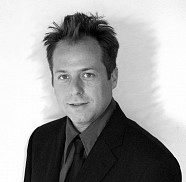
Lee Tremblay’s research in biophysics has focused on the structural and kinetic aspects of enzymatic action. In pursuit of the fundamental mechanistic forces behind enzymatic biochemistry, he has proposed experimental designs for the use of the unique features of the LCLS linear accelerator in California, which have the potential to provide…
-
Groups
Lois Pollack's research program has two distinct themes. The first theme is instrumentation: the development of experimental tools that enable novel, time-resolved studies of proteins, DNA or RNA.… Her group has developed and applied tools that report dynamic shape changes as these large molecules assume ('fold' to) their…
-
Mix-and-diffuse serial synchrotron crystallography
BioXFEL Publications 9 Oct 2017 Contributor(s): Max Oliver Wiedorn, Kanupriya Pande, Henry Chapman
http://dx.doi.org/10.1107/s2052252517013124 Unravelling the interaction of biological macromolecules with ligands and substrates at high spatial and temporal resolution remains a major challenge in structural biology. The development of serial crystallography methods at X-ray free-electron lasers and subsequently at synchrotron light sources allows…
-
Biological function investigated by time-resolved structure determination
BioXFEL Publications 21 Feb 2023 Contributor(s): Marius Schmidt
http://dx.doi.org/10.1063/4.0000177 Inspired by recent progress in time-resolved x-ray crystallography and the adoption of time-resolution by cryo-electronmicroscopy, this article enumerates several approaches developed to become bigger/smaller, faster, and better to gain new insight into the molecular mechanisms of life.… …
-
Members

Shuo is a working on developing high-throughput microfluidic platforms for time-resolved crystallography, which have the potential to enable tremendous advances in the pharmaceutical industry and medicine by enabling direct visualization of the structural dynamics associated with protein function in an automated fashion.
-
The primary structural photoresponse of phytochrome proteins captured by a femtosecond X-ray laser
BioXFEL Publications 31 Mar 2020 Contributor(s): suraj pandey, Melissa Carrillo, Robert William Bosman, Emina Stojkovic, Marius Schmidt
http://dx.doi.org/10.7554/elife.53514 Phytochrome proteins control the growth, reproduction, and photosynthesis of plants, fungi, and bacteria. Light is detected by a bilin cofactor, but it remains elusive how this leads to activation of the protein through structural changes.… The data reveal a twist of the D-ring, which leads to…
-
Members
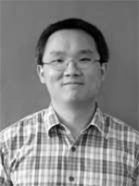
Russell Fung received his Ph.D. in Surface Physics (2005) from University of Wisconsin Milwaukee (UWM), and then worked there as a postdoctoral research associate in various groups from 2006 until 2009. His research focus has shifted from designing the best way to scan biological samples using a two-photon microscope (for which he obtained two…
-
Members
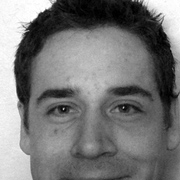
My name is Jesse Coe and I am from Albuquerque, New Mexico. I received my B.I.S. in chemistry and mathematics from Arizona State University. I am entering my fourth year as a graduate student and my research interests revolve around time-resolved structural dynamics with a particular focus on the photosynthetic electron-transfer pathway between…
-
Protein structural ensembles are revealed by redefining X-ray electron density noise
Publications 7 Jan 2014 Contributor(s): James Holton
To increase the power of X-ray crystallography to determine not only the structures but also the motions of biomolecules, we developed methods to address two classic crystallographic problems: putting electron density maps on the absolute scale of e(-)/A(3) and calculating the noise at every point in the map.… Analyzing the…
https://bioxfel.org/resources/Protein-structural-ensembles-are-revealed
-
Direct Observation of the Mechanism of Antibiotic Resistance by Mix-and-Inject at the European XFEL
BioXFEL Publications 26 Nov 2020 Contributor(s): suraj pandey, George Douglas Calvey, Andrea Katz, Tek Narsingh Malla, Faisal Hammad Mekky Koua, Ishwor Poudyal, Jay-How Yang, Kara Zielinski, Matthias Frank, Rebecca Jeanne Jernigan, Mitchell Miller, Garrett Charles Nelson, Abbas Ourmazd, John Spence, Peter Schwander, Henry Chapman, Petra Fromme, George Phillips, Lois Pollack, Marius Schmidt
http://dx.doi.org/10.1101/2020.11.24.396689 AbstractIn this study, we follow the diffusion and buildup of occupancy of the substrate ceftriaxone in M. tuberculosis β-lactamase BlaC microcrystals by structural analysis of the enzyme substrate complex at single millisecond time resolution.… We use the ‘mix-and-inject’ technique…
-
Heterogeneity in M. tuberculosis β-lactamase inhibition by Sulbactam
BioXFEL Publications 7 Sep 2023 Contributor(s): Tek Narsingh Malla, Kara Zielinski, Mark S. Hunter, Christopher Kupitz, suraj pandey, Ishwor Poudyal, Abbas Ourmazd, Petra Fromme, Peter Schwander, Henry Chapman, Emina Stojkovic, George Phillips, Lois Pollack, Marius Schmidt
http://dx.doi.org/10.1038/s41467-023-41246-1 AbstractFor decades, researchers have elucidated essential enzymatic functions on the atomic length scale by tracing atomic positions in real-time.… In this approach, enzymatic reactions are triggered by mixing substrate or ligand solutions with enzyme microcrystals. Here, we report in…
-
Members
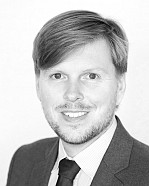
Dr. Martin Trebbin has been working on microfluidics since early 2009, with a strong focus on structure determination methods using X-rays (small-/wide-angle X-ray scattering, SAXS/WAXS) and handling of smallest amounts of samples for which he received his doctoral degree in 2013 (summa cum laude) at the University of Bayreuth…
-
Structural Biology with X-rays: Data Collection and Analysis at the SSRL Synchrotron
Events 25 Jan 2020
Jan 25 2020
BioXFEL will be sponsoring a X-ray Data Collection and Data Analysis workshop in collaboration with scientists at the Stanford Linear Accelerator Center (SLAC) National Lab on Saturday and Sunday January 25th - 26th (and optionally, on Monday the 27th for additional hands-on instruction). We will be offering a hands-on training workshop for protein…
-
Tools 25 Mar 2010
If you are behind a network firewall that requires you to use a web proxy with your browser, your Java environment will also need to use a proxy to connect to tool sessions. The default security manager for Java stipulates that an applet can make network connections only to the web server from which it was originally loaded.… In…
-
Serial femtosecond crystallography of G protein-coupled receptors
Publications 20 Dec 2013 Contributor(s): Vadim Cherezov, Uwe Weierstall, Petra Fromme, Marc Messerschmidt, John Spence, James Holton, Henry Chapman, Garrett Charles Nelson, Christopher Kupitz, Applications Manager
X-ray crystallography of G protein-coupled receptors and other membrane proteins is hampered by difficulties associated with growing sufficiently large crystals that withstand radiation damage and yield high-resolution data at synchrotron sources. We used an x-ray free-electron laser (XFEL) with individual 50-femtosecond-duration x-ray pulses to…
https://bioxfel.org/resources/Serial-femtosecond-crystallography-of-G
-
Femtosecond X-ray protein nanocrystallography
Publications 3 Feb 2011 Contributor(s): Uwe Weierstall, Stefan Hau-Riege, Petra Fromme, Matthias Frank, Mark S. Hunter, Marc Messerschmidt, Marius Schmidt, John Spence, James Holton, Henry Chapman
X-ray crystallography provides the vast majority of macromolecular structures, but the success of the method relies on growing crystals of sufficient size.… It is particularly challenging to obtain large, well-diffracting crystals of membrane proteins, for which fewer than 300 unique structures have been determined despite their…
https://bioxfel.org/resources/Femtosecond-X-ray-protein-nanocrystallography
-
Single mimivirus particles intercepted and imaged with an X-ray laser
Publications 3 Feb 2011 Contributor(s): Uwe Weierstall, Stefan Hau-Riege, Petra Fromme, Matthias Frank, Mark S. Hunter, Marc Messerschmidt, Marius Schmidt, John Spence, Henry Chapman
X-ray lasers offer new capabilities in understanding the structure of biological systems, complex materials and matter under extreme conditions.… The continuous diffraction pattern of non-crystalline objects permits oversampling and direct phase retrieval. Here we show that high-quality diffraction data can be obtained with a…
https://bioxfel.org/resources/Single-mimivirus-particles-intercepted-and
-
Publications 1 Jan 2011 Contributor(s): Marius Schmidt, Daniel Tsung-tai Lee
2014
https://bioxfel.org/resources/Reply-to-'Contradictions-in-X-ray
-
BioXFEL Members Take Part in Sample Delivery Research
News 7 Aug 2018
A team of researchers, led by scientists from DESY, has demonstrated the successful use of a new type of liquid jet at high pulse repetition rates at FLASH.… Furthermore, the researchers conducted the first crystal diffraction experiments using X-ray pulse repetition rates of about a million pulses per second (MHz). X-ray…
-
Resources 27 Mar 2010
What are resources? How do I upload a new resource? How can I delete a resource?… Is there a limit on the number of resources I can submit? What are resources? Think of a hub as an empty library. Resources are items on the shelves. Unlike a traditional library, resources not only be publications, but also videos, tools,…
-
Practical considerations for the analysis of time-resolved x-ray data
BioXFEL Publications 16 Aug 2023 Contributor(s): Marius Schmidt
http://dx.doi.org/10.1063/4.0000196 The field of time-resolved macromolecular crystallography has been expanding rapidly after free electron lasers for hard x rays (XFELs) became available.… Although time-scales and data collection modalities can differ substantially between these types of light sources, the analysis of the…
-
BioXFEL Publications 9 Apr 2014 Contributor(s): Marius Schmidt
http://dx.doi.org/10.1039/c4fd00011k Jasper J. van Thor and Mark M. Warren and Craig N. Lincoln and Matthieu Chollet and Henrik Till Lemke and David M. Fritz and Marius Schmidt and Jason Tenboer and Zhong Ren and Vukica Srajer and Keith Moffat and Tim Graber Van Thor, J.J. et al., 2014. Signal to noise considerations for single crystal femtosecond…
-
The Coherent X-ray Imaging Data Bank
Publications 1 Jan 2011 Contributor(s): Nadia Zatsepin
www.cxidb.orgThe Coherent X-ray Imaging Data Bank (CXIDB) is a database offering scientists access to data from Coherent X-ray Imaging (CXI) experiments, including serial femtosecond crystallography and single particle imaging.www.cxidb.orgThe Coherent X-ray Imaging Data BankFilipe R N C MaiaNature Methods 9, 854–855 (2012)…
https://bioxfel.org/resources/The-Coherent-X-ray-Imaging-Data
-
Members

Lois Pollack's research program has two distinct themes. The first theme is instrumentation: the development of experimental tools that enable novel, time-resolved studies of proteins, DNA or RNA.… Her group has developed and applied tools that report dynamic shape changes as these large molecules assume ('fold' to) their…
-
Workshop: Scientific opportunities at ASU Compact X-ray Free Electron Laser
Events 6 Apr 2018
Apr 06 2018
Dynamics, Structure, and Function in Biological Systems Scientific opportunities at ASU Compact X-ray Free Electron Laser Arizona State University Biodesign Institute, Center for Applied Structural Discovery … Tempe, AZ April 6-8, 2018 More information and registration can be found here. Friday April 6 12:30 Light lunch in…
-
Time-resolved Crystallography on Protein Photoreceptors and Enzymes
BioXFEL Publications 8 Dec 2023 Contributor(s): Marius Schmidt
http://dx.doi.org/10.1039/bk9781837670154-00203 Time-resolved macromolecular crystallography (TRX) unifies structure determination of biomolecules with chemical kinetics.… With TR-SFX, femtosecond time-resolution is possible and cyclic and non-cyclic macromolecular reactions can be equally well investigated.… …
-
BioXFEL Journal Club with Bahige Abdallah (ASU) & Ganesh Subramanian (ASU)
Events 18 Feb 2015
Feb 18 2015
Bobby Abdallah, a graduate student in the Ros Lab at Arizona State University, will present the article: … "Tenbauer, J., Basu, S., et. al. (2014). Time-resolved serial crystallography captures high-resolution intermediates of photoactive yellow protein.… " http://www.sciencemag.org/content/346/6214/1242 Ganesh…
-
Electron beam exposes crystal details down to hydrogen atoms
News 17 Jan 2017
A new algorithm created by Czech and French researchers allows 3D electron diffraction patterns to reveal nanocrystal structures down to the positions of individual hydrogen atoms. Researchers believe its uses could range from studying pharmaceuticals to catalysis and beyond. X-ray crystallography, in which the diffraction pattern of x-rays…
-
Extraction of fast changes in the structure of a disordered ensemble of photoexcited biomolecules
Teaching Materials 13 Oct 2015
Using pump-probe experiments of varying time intervals between pump and probe, the method of time-resolved crystallography has given many insights into the fast time variations of crystallized molecules as a result of photoexcitation.… Authors: H.-C. Poon, M. Schmidt, and D. K. Saldin View article Video Summary
-
Timothy Stachowski Wins Linus Pauling Poster Prize
News 8 Aug 2019
Timothy Stachowski, a University at Buffalo Ph.D. candidate studying in the Snell Group at HWI, was awarded one of the Linus Pauling Poster Prizes at the 2019 American Crystallographic Association (ACA) meeting.… The international meeting focused on X-ray crystallography, one of HWI’s strongest methods in structural biology, was…
-
BioXFEL Publications 19 Nov 2020 Contributor(s): Reza Nazari, Brian Abbey, Henry Chapman, Alice Contreras, Hasan Demirci, Matthias Frank, Brenda Hogue, Ahmad Hosseinizadeh, Mark S. Hunter, Richard Kirian, Abbas Ourmazd, Peter Schwander
http://dx.doi.org/10.1038/s41597-020-00745-2 AbstractSingle Particle Imaging (SPI) with intense coherent X-ray pulses from X-ray free-electron lasers (XFELs) has the potential to produce molecular structures without the need for crystallization or freezing. Here we present a dataset of 285,944 diffraction patterns from aerosolized Coliphage PR772…
-
The Macromolecular Femtosecond Crystallography Instrument at the Linac Coherent Light Source
BioXFEL Publications 22 Feb 2019 Contributor(s): Mark S. Hunter, Hasan Demirci, Brandon Hayes, Christopher Kupitz
http://dx.doi.org/10.1107/s1600577519001577 The Macromolecular Femtosecond Crystallography (MFX) instrument at the Linac Coherent Light Source (LCLS) is the seventh and newest instrument at the world's first hard X-ray free-electron laser. It was designed with a primary focus on structural biology, employing the ultrafast pulses of X-rays from…
-
Groups 25 Mar 2010
What is Group Discoverability? What is Group Membership Access? How to Customize a Group? What are Group Plugin Access Levels? How are groups managed? How do I leave a group? How do I delete a group?… What is Group Discoverability? All groups have an overall discoverability setting of either visible or…
-
Events 29 Apr 2015
Apr 29 2015
LI56 - Visualizing early photo-intermediates in a light-switchable fluorescent protein using femtosecond time-resolved SFX
-
Scaling and merging time-resolved pink-beam diffraction with variational inference
BioXFEL Publications 8 Nov 2024 Contributor(s): Kara Zielinski, Lois Pollack
https://doi.org/10.1063/4.0000269 Time-resolved x-ray crystallography (TR-X) at synchrotrons and free electron lasers is a promising technique for recording dynamics of molecules at atomic resolution.… Extracting small, time-dependent changes in signal is frequently a bottleneck for practitioners.… However, the…
-
Time-resolved protein nanocrystallography using an X-ray free-electron laser
Publications 30 Jan 2012 Contributor(s): Uwe Weierstall, Stefan Hau-Riege, Petra Fromme, Matthias Frank, Mark S. Hunter, Marc Messerschmidt, Marius Schmidt, John Spence, James Holton, Henry Chapman
We demonstrate the use of an X-ray free electron laser synchronized with an optical pump laser to obtain X-ray diffraction snapshots from the photoactivated states of large membrane protein complexes in the form of nanocrystals flowing in a liquid jet.… The result correlates with the microsecond kinetics of electron transfer from…
https://bioxfel.org/resources/Time-resolved-protein-nanocrystallography-using-an
-
News 25 Mar 2021
Many organisms use sunlight to fuel cellular functions. But exactly how does this conversion of solar energy into chemical energy unfold? In a recent experiment, an international team of scientists, including several research groups from the BioXFEL Science and Technology Center, used time-resolved serial femtosecond crystallography (TR-SFX)…
-
Enzyme Intermediates Captured "on-the-fly" by Mix-and-Inject Serial Crystallography
BioXFEL Publications 13 Oct 2017 Contributor(s): suraj pandey, George Douglas Calvey, Andrea Katz, Christopher Kupitz, Mark S. Hunter, Max Oliver Wiedorn, Kanupriya Pande, Mitchell Miller, Shatabdi Roy-Chowdhury, Jesse David Coe, Nirupa Nagaratnam, James D Zook, Jacob Christopher Verburgt, Tyler Norwood, Ishwor Poudyal, Yun Zhao, Garrett Charles Nelson, GANESH SUBRAMANIAN, Peter Schwander, Matthias Frank, Uwe Weierstall, Nadia Zatsepin, John Spence, Petra Fromme, Henry Chapman, Lois Pollack, Lee Tremblay, Abbas Ourmazd, George Phillips, Marius Schmidt
http://dx.doi.org/10.1101/202432 Ever since the first atomic structure of an enzyme was solved, the discovery of the mechanism and dynamics of reactions catalyzed by biomolecules has been the key goal for the understanding of the molecular processes that drive life on earth.… Here, we demonstrate a general method for capturing…
-
Members
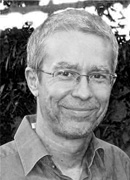
Dr. Weierstall received his Ph.D., in Physics from the University of Tübingen, Germany in 1994 and then joined Arizona State University (ASU), as a postdoctoral fellow. He was employed as a Research Scientist at ASU from 1998 to 2008, where he designed a wide variety of new instrumentation, such as the Scanning Tunneling Atom Probe, which…
-
Web Seminar: Dynamic structural biology revealed by time-resolved studies
Events 19 Apr 2017
Apr 19 2017
Dynamic structural biology revealed by time-resolved studies, over longer reactions, … with less sample, and including complementary methods Presented by Allen Orville X-ray free electron laser (XFEL) sources enable new science, but require novel sample delivery methods.… We developed acoustic droplet ejection…
-
Members

Nadia Zatsepin was an Assistant Professor (Research) at Arizona State University and Head of XFEL data analysis in BioXFEL from 2013 to 2019, when she moved to La Trobe University, Australia. Her research focus is on the application and development of serial femtosecond crystallography (SFX) at X-ray free electron lasers (XFELs), and serial…



